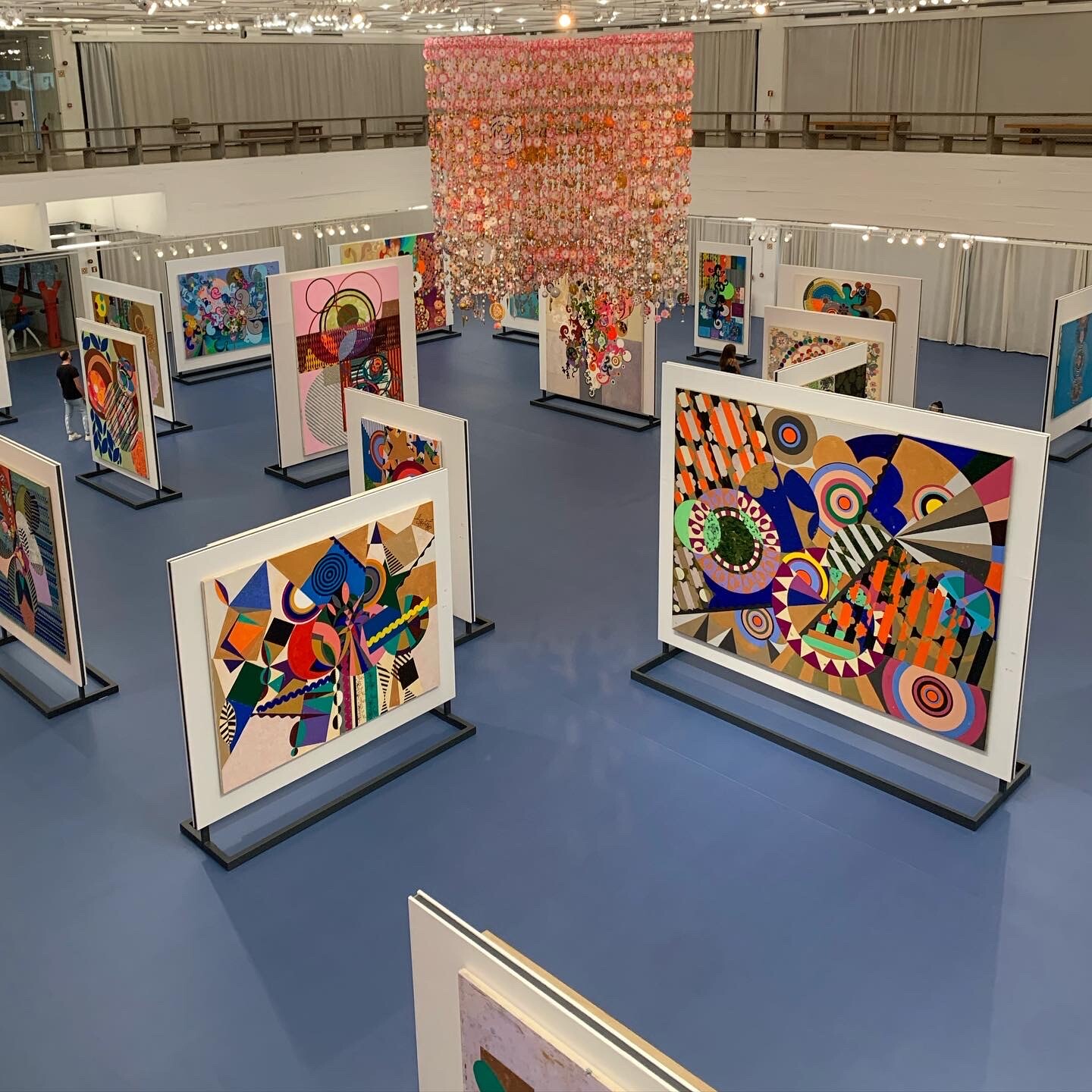Avenida Paulista
December 18, 2020–May 30, 2021
Avenida Paulista, 1578
São Paulo-SP
01310200
Brazil
Hours: Tuesday 10am–8pm,
Wednesday–Sunday 10am–6pm
T +55 11 3149 5959
imprensa@masp.org.br
Also on view at:
Itaú Cultural
Avenida Paulista, 149
São Paulo-SP
01311-000
Brazil
Hours: Tuesday–Friday 1–7pm;
Saturday–Sunday 10am–4pm
T +55 11 2168-1777
itaucultural.org.br
This is the largest exhibition dedicated to the work of Beatriz Milhazes (Rio de Janeiro, 1960), a central artist in Brazilian contemporary art, in the panorama of international painting, and in the recent history of abstraction. Milhazes works with a complex repertoire of images associated with different motifs, origins, and sources, mostly in painting, but also in printmaking, collage, drawing, sculpture, artist’s books, and textiles, among other media.
Oscillating between abstraction and figuration, geometry and free form, Milhazes’ compositions are intricate, dense, multi-colored, and literally full of layers—of colors, paints, papers, and meanings. Each form emerges and develops from a specific universe, and may last for decades in the artist’s repertoire, transform over the years, or mark a certain period. Her sources are diverse and plural: from modernism to the baroque, from so-called arte popular to pop culture, from fashion to jewelry, from the very history of art to nature itself, from architecture to abstraction, encompassing multiple references—such as Tarsila do Amaral (1886–1973), Sonia Delaunay (1885–1979), Bridget Riley and Ione Saldanha (1919–2001), to name a few.
The exhibition takes its title from the avenue where the two institutions that co-organized the project are located: at Itaú Cultural, where collages and prints are displayed, curated by Ivo Mesquita; at MASP, where paintings, sculptures, drawings, books, documents, and a tapestry are displayed, curated by Adriano Pedrosa, artistic director, with the assistance of Amanda Carneiro, assistant curator, MASP.
Avenida Paulista is also the title of a painting made especially for the occasion and gifted by the artist to MASP, displayed on the second floor, where the museum’s collection is located. In addition, the exhibition also occupies the mezzanine and the gallery of the first sublevel, where one finds small-scale paintings, drawings, documents, artist’s books, catalogs and ephemera. On the second sublevel gallery, large-scale paintings are exhibited on display structures that are an unfolding of the radical glass easels designed by Lina Bo Bardi (1914–92) for MASP’s collection. The paintings are organized in an inverse chronology. In the vitrines of the second sublevel, works produced during Milhazes’ 2016 and 2018 workshops with children at MASP are exhibited. Hanging from the ceiling, a new version of the sculpture Gamboa (2010–20) pours towards the center of the space, creating an environment for the presentations by Márcia Milhazes Companhia de Dança. Since the 1990s, Beatriz has developed scenography and projects in collaboration with her sister, the choreographer Márcia, configuring an important aspect of her trajectory, underlined by this exhibition, which after all is part of a full year dedicated to the Histories of Dance at the museum (in 2020).
The exhibition in both venues includes more than 170 works made since 1989, a turning point in Milhazes’ career. It was in that year that she developed the technique she called monotransfer, in which she paints on a sheet of transparent plastic and then decals or transfers the painted and dry element to the canvas. Beatriz Milhazes: Avenida Paulista is a truly unique opportunity to discover the diverse, complex, multifaceted, and singular work of Beatriz Milhazes, which demands to be seen in real life, in full scale and in person.
The exhibition is accompanied by a fully illustrated catalog, organized and published by MASP in partnership with Itaú Cultural, and, for the English edition, with Delmonico D.A.P. Edited by the exhibition’s curators, Adriano Pedrosa, Amanda Carneiro and Ivo Mesquita, this is the most comprehensive catalog on Beatriz Milhazes to date, featuring essays by the editors as well as by Estrella de Diego, Isabel Carlos, Jo Applin, Luiza Interlenghi and Yuko Hasegawa. The book in printed on two papers, with four different hardcovers, 370 pages and 280 images. Portuguese edition available now in through masploja.org.br or loja [at] masp.org.br; English edition available in the fall through Delmonico D.A.P.
For additional information and images visit masp.org.br.


